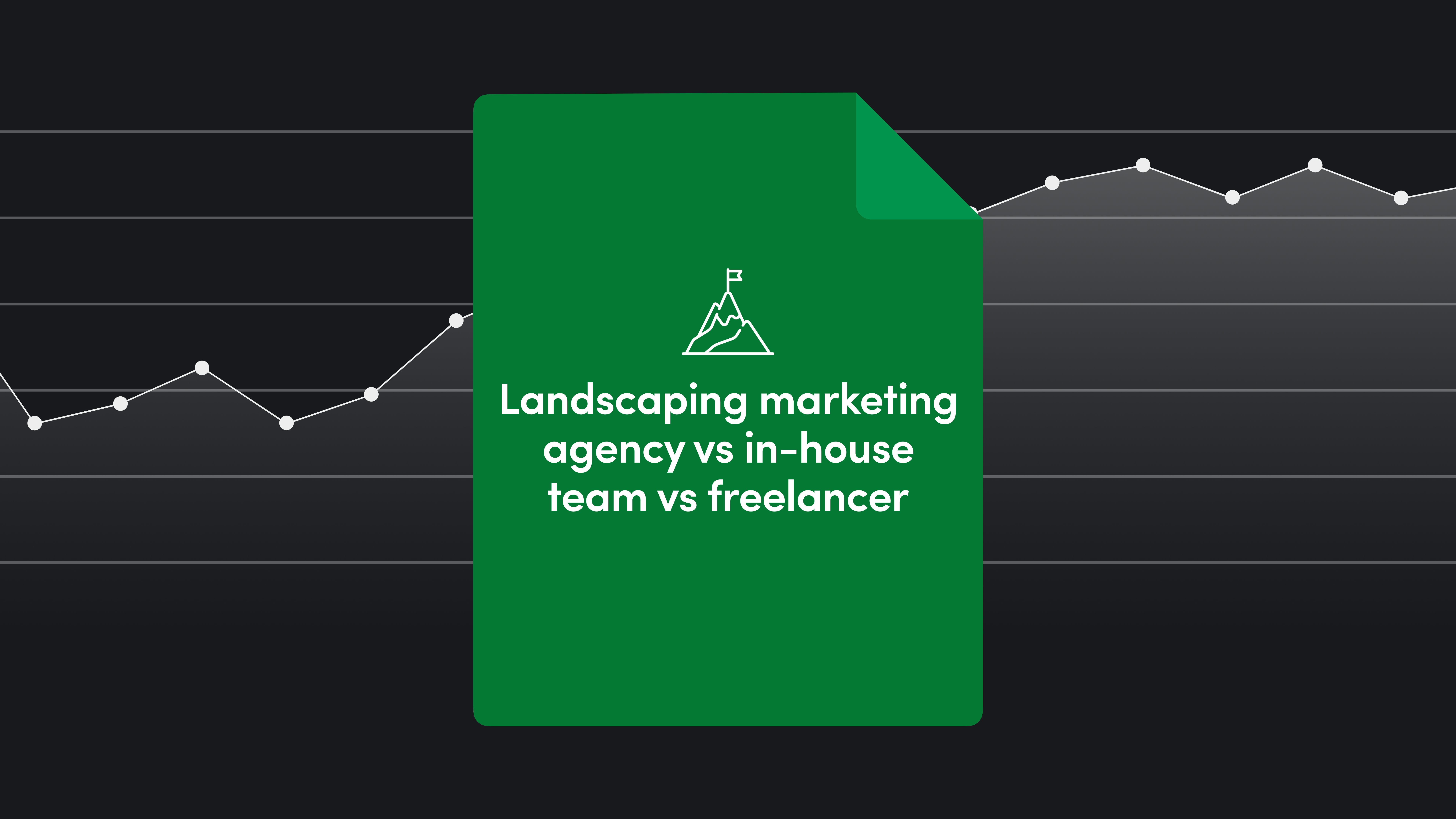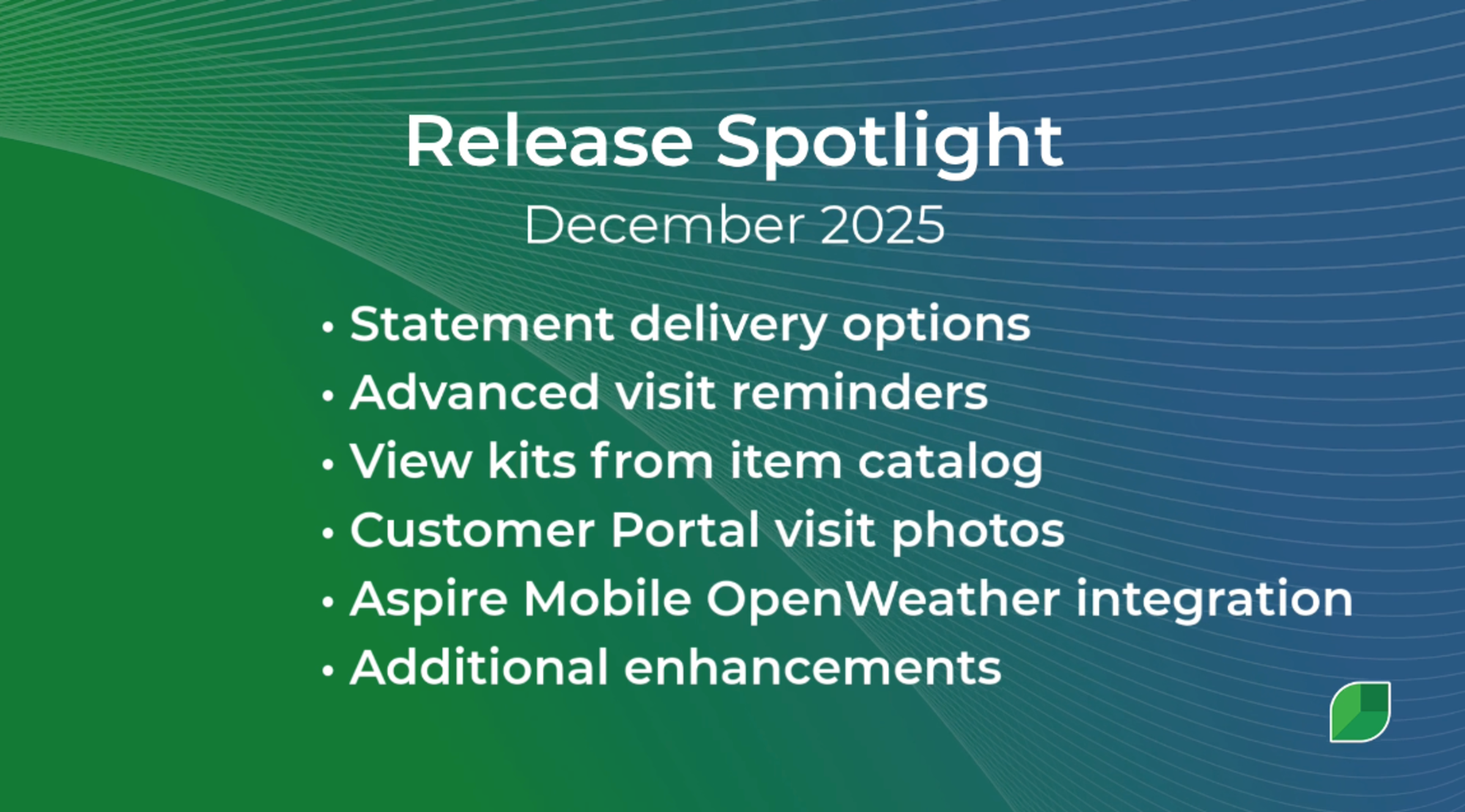Table of Contents
Download this article as a PDF
Raise your hand if you like criticism.
…
No one?
If we’re being honest, most of us have two hands at our sides right now.
No one likes criticism. Maybe we see the value in constructive feedback, but it’s still not fun to be on the receiving end. And while being on the giving end has less soul-crushing potential, that’s not not always easy either.
Unfortunately, criticism and all its negative connotations have come to define how we think about employee performance reviews.
It should come as no surprise, then, that the idea of offering annual reviews makes lots of landscape business owners squirm.
For some, it’s because they struggle with employee retention and fear that any kind of formal feedback process would only encourage staff to leave. Others just see reviews as a waste of time. So are performance reviews even worth the hassle?
We say “yes,” because when they’re done well, employee evaluations can have a significant impact on your landscaping business.
How?
They encourage high performers
If you have even a few star employees at your organization, reviews give you a great opportunity to recognize and appreciate their hard work. Recognition boosts employee engagement, satisfaction, and retention, which—when it comes to keeping the best workers—should be high on your priority list.
Even employees who don’t meet that high standard benefit from positive feedback about their accomplishments (even if it’s followed by recommendations for growth areas).
If employees don’t think their performance is being monitored, they’re less motivated to go above and beyond. But when they know a formal performance review is coming at the end of the year, they’ll see value in investing more time and attention in their work.
They increase productivity for low performers
Reviews—when they’re done correctly—can actually help underperforming employees become more productive.
The point of a review is not to tell someone all the ways they’re failing. It’s to point out any discrepancies between your expectations as an employer and the employee’s record of meeting, exceeding, or falling short of those expectations.
Without a formal review process, managers don’t have an opportunity to discuss where expectations aren’t being met until something has become a major issue, possibly requiring disciplinary action.
Working with underperforming team members during the review process lets you come up with a plan for improving problem areas. This gives managers something concrete to check in on regularly, monitor with the employee, and reward when objectives are met, which encourages higher productivity.
Choosing a format
Performance reviews come in all shapes and sizes.
There are lots of methodologies out there if you want to add an official, labeled structure to your review process (you can read about a few here), but you don’t have to use one of those systems to conduct effective reviews.
All you need to do is decide what format your performance reviews should take. To do that, you just need to think through three major questions:
When will reviews be held?
Who needs to be involved?
What are the consequences?
There’s no right answer to any of these questions. It’s all about what makes sense for your business.
Timing
On the timing side, you have several options:
Hold reviews annually at the same time for all employees
hold reviews annually based on an employee’s start date
Have regular check-ins throughout the year (quarterly, monthly, etc.) and use one of them to measure overall annual performance
Who’s involved
Traditionally, performance reviews are between an employee and her supervisor. Depending on your needs, though, you can involve other people in the review process.
For example, reviews may also include:
Peers (anyone who works with the employee)
Clients (you can solicit customer feedback to inform the review process)
Board members
The employee themselves (some review processes have the employee and supervisor fill out the same form separately and come together to compare)
Consequences
The final choice is about consequences. This is the “so what” of a performance review.
Reviews can be tied to compensation or bonus structures, but that’s not always the case. Some landscape companies prefer to keep the two separate.
Whatever you decide, it’s important to make sure the stakes of a review are clearly communicated to employees well before it’s time to actually sit down with their manager.
How to prepare for a performance review
Lack of preparation is one of the biggest reasons landscape business owners feel performance reviews are a waste of time.
To get the most out of a review, both the employee and the employer need to invest time collecting and evaluating data.
For employees, this means looking back over their record and thinking about what they want to accomplish in the following year. For employers, it means:
Setting and communicating goals
Gathering data
Maintaining regular check-ins
Set and communicate goals
Hopefully you have a business strategy in place for your landscape company. Assuming you do, has your management team tied those company goals to department and individual goals?
For example, say one of your company goals is to increase the construction percentage of your service mix from 25% to 40% by the end of the year. What would a subgoal be for your sales team? Crew members? Account managers?
Using business goals to identify individual employee objectives isn’t just a great way to make sure those goals are met. It also shows staff how their efforts affect the company’s overall performance, helping them feel like they’re a part of something bigger.
Gather data
We’ll get into evaluation measures later, but for now, assume you have criteria in place based on the goals you’ve defined for your business.
The next step is to gather information about how each employee has performed based on the metrics you identified.
With landscape business management software like Aspire, pulling data is easy. You can see things like attendance records, crew performance, revenue generation, client relationships, and more in one convenient location.
In addition to this kind of quantitative data, you may want to talk to other people (coworkers, direct reports, clients, human resources, etc.) about the employee to gather additional insights.
Maintain regular check-ins
Finally, one of the best ways to ensure successful performance reviews is to hold regular check-ins throughout the year.
No one wants to be surprised during an annual review, so scheduling a few less formal meetings can be a great way to make sure supervisors and employees are on the same page about progress.
What to include in a performance review
Once you’ve chosen a format and set your goals, it’s time to pick your evaluation criteria.
How will you determine whether an employee is meeting, exceeding, or failing to meet expectations? It’s important to think about (and record) these expectations to ensure your review process is fair and equitable.
The best way to formalize these criteria is to create an evaluation form that can be used by managers to conduct all annual reviews. It doesn’t need to be fancy—just a document with a list of criteria and a way to record evaluations for individual employees.
Performance review documents can be tailored to your landscape company’s needs, but they often include a list of areas to “grade” employees on, followed by a few open-ended questions to provide additional detail.
The first part (the grading section) should be based on the key evaluation criteria you identify. We’ve listed some examples of criteria to use for crew members and office staff below.
For each of these measures, you could use a ranking system (1–10) or basic 4-part classification hierarchy that includes:
Outstanding
Exceeds expectations
Meets expectations
Unsatisfactory
Evaluation criteria for crew members
Here are some performance areas you could include on your annual reviews for crew members.
Safety
Were they accident-free all year? Did they handle equipment properly and follow all safety protocols?
Productivity
Did they finish the work assigned to them? How efficient were they in completing jobs?
Presentation
Did they wear their uniform every day? Were there any customer complaints regarding appearance or behavior in the field?
Communication
Did they communicate respectfully and appropriately with colleagues and customers? Did they bring any issues up with their manager in a timely fashion?
Attendance
Did they show up to work on time when scheduled?
Quality of work
Did they leave job sites in impeccable condition, or did you have to send crews to rework because of mistakes?
Dedication
Did they go above and beyond by taking special care of equipment, pointing out upsell opportunities, or volunteering to help coworkers?
Evaluation criteria for administrative staff
Here are some performance areas you could include on your annual reviews for back-office staff.
Productivity
Did they fulfill all the duties laid out in their job description? Or were there responsibilities that fell by the wayside?
Communication
How are their communication skills? Did they communicate respectfully and appropriately with colleagues and customers?
Knowledge of work
How competent were they in performing their duties? Did they know how to approach their work, or did they lack skill in certain areas?
Teamwork
Did they have good working relationships with their colleagues? Did they ask for (and listen to) ideas and feedback from others, regardless of their job title?
Problem solving
Did they respond well when faced with a challenge or difficult decision? How creative were they in coming up with solutions?
Leadership
Did they demonstrate leadership skills in managing direct reports, establishing goals, and promoting innovation?
Responsiveness
Did they respond to communication from colleagues and clients in a timely fashion?
Dependability
Did they consistently do what they said they would do, when they said they would do it? Or did they often make excuses for missed deadlines or abandoned projects?
Time Management
Were they able to manage their time well to maximize productivity and meet their objectives?
Open-ended questions
Asking open-ended questions during an annual performance review gives employees and managers a chance to dig deeper into specific issues—or raise new ones that didn’t fit inside the other categories.
Here’s some open-ended questions to include in performance reviews:
What are the employee’s strengths and accomplishments?
What are their areas for improvement?
What steps can the employee take to improve within the next 3 months?
What support does the employee need from their manager to accomplish this?
When coming up with an action plan, it may help managers to break the review into two smaller meetings—one to go over the evaluation criteria and answer the first two questions, and another to discuss questions three and four. That way, the employee has some ownership over his experience—and time to think about the steps he wants to take.
For high performers, an action plan might look like coming up with professional development opportunities to help them reach their career goals.
Get a free HR toolkit
The landscape industry need not fear performance appraisals. Setting goals and measuring job performance on a regular basis can contribute to a work environment that keeps employees motivated and engaged.
You can download this article as a PDF here if you want to save it for later.
And if you’re interested in more resources for managing the employee side of a landscape business, you may want to pick up a copy of our free ebook, Level up your HR efforts: A comprehensive guide to improving recruitment and retention.











